Expeditions of John Stuart into the Flinders and beyond.
John Stuart was an explorer who mapped the Flinders ranges as well as a path through the centre of Australia. The principal road from Port Augusta to Darwin is the Stuart Highway. The Small group tour of the Flinders ranges spends time learning about Stuart.
2 May 20 · 8 mins read

Expeditions of John Stuart into the Flinders.
The Scottish explorer John McDouall Stuart was the first European to cross the Australian mainland.
John McDouall Stuart was born in Dysart, in Fife, Scotland, the youngest of nine children of William Stuart, an army captain, and his wife Mary McDouall. Stuart graduated from the Scottish Naval and Military Academy, Edinburgh, and in 1838 decided to migrate to South Australia, then barely more than an outpost of tents and thrown-up wooden huts. Stuart soon found employment with the Surveyor’s Department, surveying and marking out lands for farmers to settle in the semi-arid scrub of South Australia.
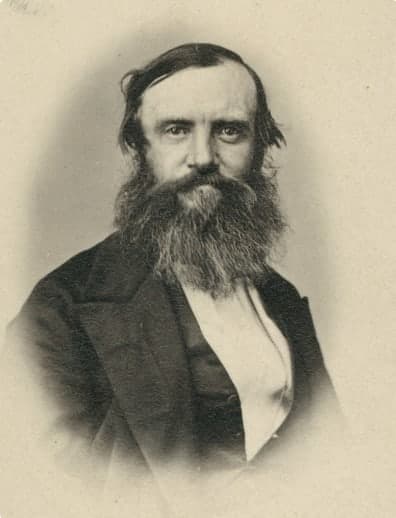
In 1844, Stuart had the opportunity to join an exploring party led by Captain Charles Sturt . Captain Sturt was already a legend, as he had solved the mystery of the inland-flowing rivers of New South Wales, reaching the Darling River, mapping the Murrumbidgee, and following the Murray to the sea.
Unfortunately, Sturt‘s expedition of 1844 in search of the hoped-for inland sea proved a disaster. The party hit two of the most arid points of the Australian landscape: the Sturt Stony Desert and the Simpson Desert . A number of the men, including the second-in-command James Poole, died of scurvy, while Captain Sturt never really recovered from his experiences, and returned to England soon after. Stuart himself was unable to work or travel for a year.
His experience with Sturt‘s expedition party had educated Stuart of the problems of Australian exploration and leading large groups of men into arid landscapes in inland Australia, where there was no water. Stuart‘s expedition would aim for maximum speed on his Australian exploration. Stuart‘s expedition would bring small groups of men, travelling only on horseback, which eradicated the need for slow-moving wagons or travelling stock for rations. Eradicating the military barriers of rank that marked Sturt‘s expeditions, he considered his men his companions, and though his men suffered great hardships, nobody ever died on one of Stuart‘s missions exploring inland Australia.
From 1846-1859, Stuart worked as a surveyor, before settling in the northern Flinders Ranges where he worked for wealthy pastoralists, exploring, prospecting for minerals, and surveying pastoral leases.
Stuart’s First Expedition (1858):
In 1858, Stuart was financed by the Flinders Ranges pastoralist William Finke to head into north-western South Australiato find new grazing land, minerals, and a mysterious land which Aboriginal Australians called Wingillpin. Stuart left with only an assistant, Forster, and an Aboriginal teenager whose name does not appear in the records. They took five or six horses and provisions for a month, were guided by a pocket compass and a watch.
On this expedition of inland Australia, he discovered a creek (south of Lake Eyre) which he named Chambers Creek – now renamed Stuart Creek. Around what is now Coober Pedy the party turned south-west, not realising the wealth of opals below ground! After a hard trek through the fringes of the Great Victoria desert, Stuart reached the coast at Miller’s Water. Suffering from scurvy, he rested ten days at Mount Arden station, before returning to Adelaide .
The trip established Stuart’s reputation as an explorer of great ability. He had discovered extensive tracts of new pastoral land for the colony. The London Royal Geographical Society honoured him with a gold watch, and Stuart was granted a pastoral lease by the South Australian government.
Stuart’s Second Expedition (1859):
However, Stuart‘s sought after pastoral lease exceeded the dimensions that he was strictly entitled to as explorer. In order to ‘fast track’ his application, Stuart offered to survey his chosen blocks himself, rather than wait for the government surveyor. After surveying his land, he aimed to reach the border with the Northern Territory (then a part of New SouthWales), but fell short by several miles. However, he had discovered a ‘beautiful spring’ fed by the then-unknown Great Artesian Basin, which he called ‘the Spring of Hope’, which could enable further travel into the desert.
Stuart’s Third Expedition (1859 – 1860):
Stuart returned to Adelaide ‘fired up’ to cross the continent. The colony had reached a peak of exploration fever: at ‘home’ (Britain), public attention was fixed on attempts to find the route of the Nile, while colonial governments in Australiasought to use the telegraph (invented by Samuel Morse in 1838) to link the colonies with the wider world. In 1859, the South Australian government announced a prize of 2000 pounds to the first person to cross the Australian continent.
Stuart set out, exploring the regions around Lake Eyre and mapping the northern boundaries of the lake. He discovered new springs fed by the Great Artesian Basin, many good creeks and lakes. The party returned to Chambers Creek in 1860.
Stuart’s Fourth Expedition (1860):
In March 1860, Stuart set out from base camp at Chambers Creek for his fourth expedition. Accompanied by William Darton Kekwick, Benjamin Head, and thirteen horses, they became the first Europeans to cross the northern boundary of South Australia, entering the Northern Territory from the south. For the first time, Europeans gazed upon the ‘red centre’, discovering geographical features including the Chambers Pillar, Finke River, and the James, Waterhouse and McDonnell Ranges.
On Sunday April 22, 1860, Stuart used astronomical observation to conclude that he was in the centre of Australia. The next day, he and his companions climbed a nearby mountain, raised the Union Jack, and declared it central Mount Sturt, after his former mentor. (The mountain has since been renamed central Mount Stuart).
Despite their dwindling resources and failing health, Stuart‘s expedition managed to pass north of what is now Tennant Creek, but were repelled by well-armed Warramunga men at a place now known as Attack Creek. Stuart and his companions returned to Adelaide, half-starved. On return, he was acclaimed as a hero, receiving the Patron’s Medal of the Royal Geographical Society, and was honoured with a breakfast at the White’s Rooms in Adelaide.
Stuart’s Fifth Expedition (1861):
Stuart‘s next expedition was powered by intercolonial rivalry. Victoria, by far the richest of the colonies, had financed the expedition led by Burke and Wills to cross the Australian continent, north to south. They had spared no expenses, with Burke and Wills’s expedition (equipped with camels , horses, and six wagons of supplies) costing over 9000 pounds.
Time was short for South Australia. Burke and Wills had already left Melbourne in August 1860, when Stuart was at Attack Creek. The South Australian government voted 2,500 pounds to finance a mission to reach the northern coast of Australia. Stuart left on January 1, 1861 in search of the North coast, with twelve men and forty-nine horses, the first time he had led a large expedition.
On February 11, 1961, Burke and Wills reached tidal waters on the estuary of the Bynoe River, near the Gulf of Carpentaria. At that point, Stuart was near the South Australia/Northern Territory Border. He then encountered problems passing Attack Creek, but was able to circumvent this by crossing waterless scrubby country to the northwest.
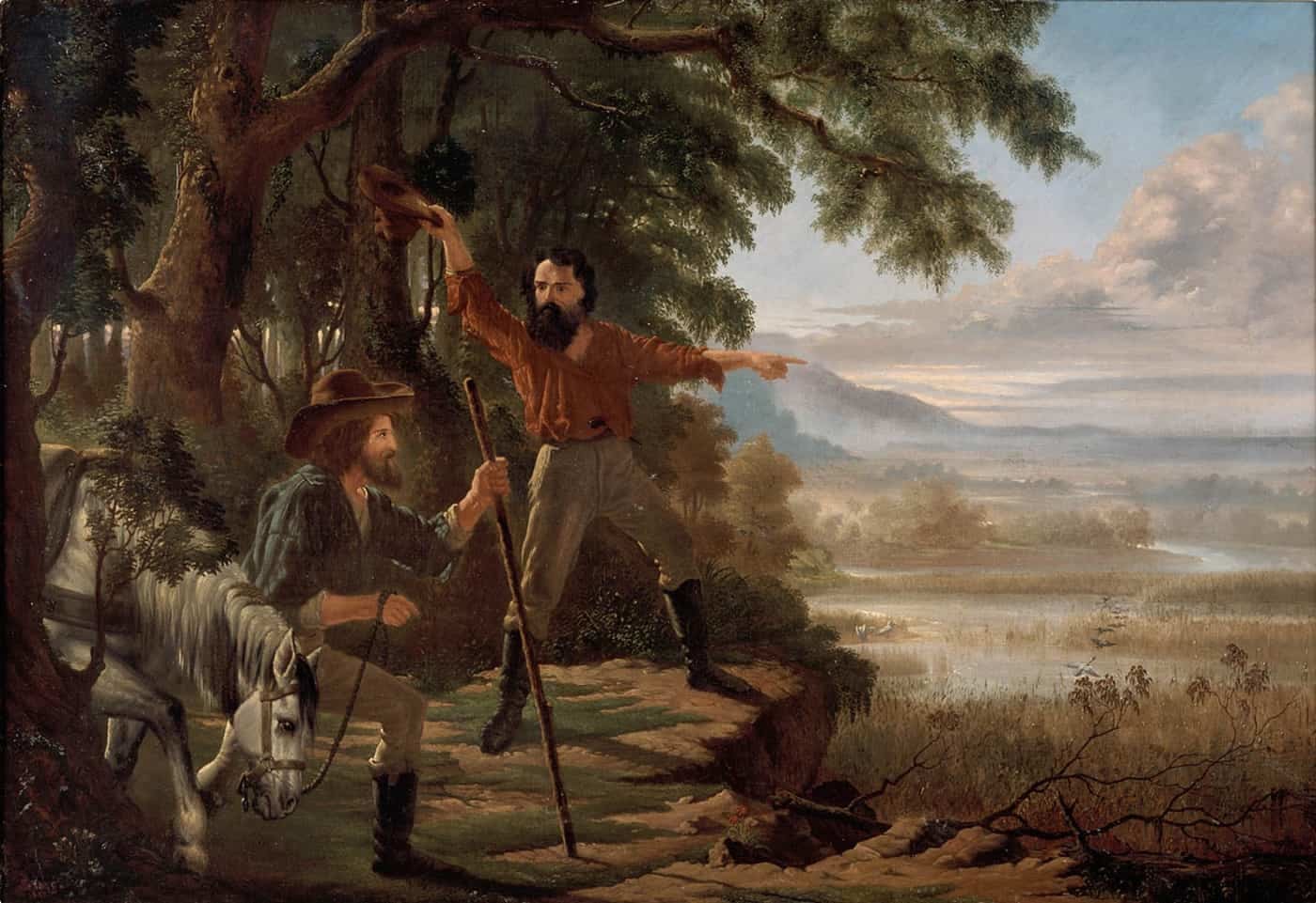
Provisions soon dwindled and Stuart almost declared defeat – naming a newly discovered watercourse ‘Burke‘s Creek’, in honour of his ‘brother explorer’. On July 1, 1861, Stuart admitted defeat just beyond Newcastle waters, and his team returned to Adelaide.
Later years:
On his return to the city, Stuart learnt about the disaster that had struck Burke and Wills. No less than seven members of Australia‘s best-funded expedition had disappeared completely.
Stuart remained convinced that he could cross the continent. Yet public interest in exploration had waned rapidly, and the South Australian government was reluctant to fund Stuart‘s explorations. They were finally convinced by the prospect of building the overland telegraph line, and gave Stuart a further 2000 which he supplemented with private funds.
Stuart set out again in October, 1861 on his sixth expedition. Passing slowly through the centre, the expedition again suffered from lack of provisions. However, this final expedition of the explorer John Mcdouall Stuart would prove successful: Stuart reached the Indian Ocean at Chambers Bay on the North coast (near present-day Darwin ) on July 24, 1862. He marked a tree with his initials, JMDS.
John Mcdouall Stuart is considered to be Australia‘s greatest inland explorer of the colonial era.
On the return journey, Stuart was so weak from scurvy that he had to be carried on a stretcher. He arrived in Adelaide on 17 December. On a public holiday on 21 January 1863, banners hung from buildings and crowds filled the streets to celebrate Stuart.

Stuart never recovered from his last journey. White-haired, exhausted and nearly blind, he decided to return to Scotland to visit his sister. He set sail in 1864, and remained in the United Kingdom for the rest of his life – only two years.
Stuart would not receive credit for his accomplishments for a number years. His character – fiercely independent, with few friends – and penchant for heavy drinking led many to suspect that he had not really reached the Indian Ocean. These suspicions were furthered when the surveying party sent to find Stuart’s tree was unable to locate it. Stuart had estimated his longitude incorrectly, and had followed the Mary River rather than the Adelaide River to the coast.
In 1883, Stuart’s tree was located, and photographed in 1885, verifying his claims. The route he established through the centre of Australia became the basis of the Australian Overland Telegraph Line. In 1942, the principal road from Port Augusta to Darwin was named the Stuart Highway in his honour. As the latter day explorer and historian, Ernest Favenc, wrote:
Stuart’s victory was all his own; he had followed in no other persons footsteps: he had crossed the true centre, and he had made the coast at a point much further north than his rivals.
If you’re interested in exploration, you may want to also read our article on Five Female Explorers.
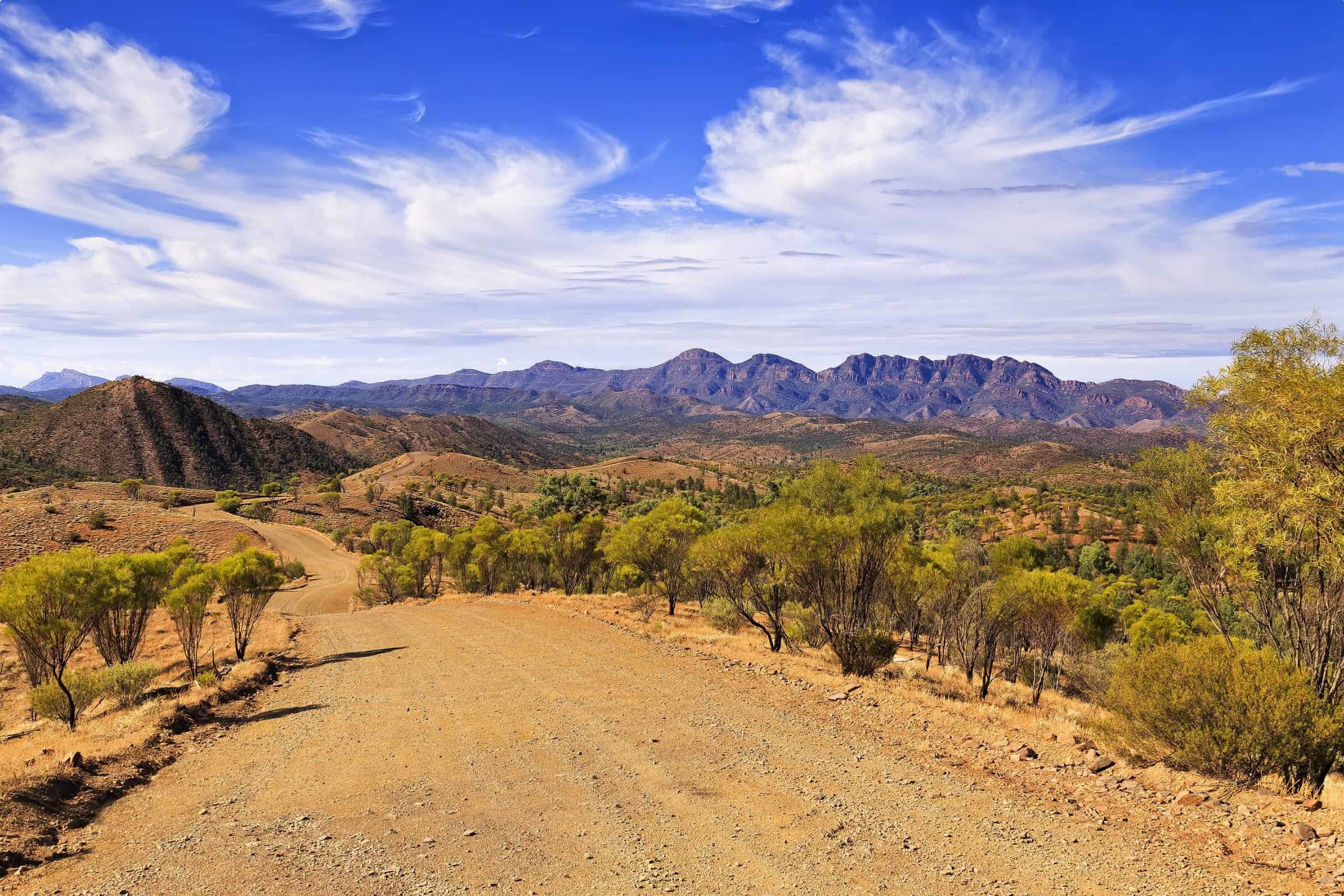
Odyssey Traveller delves into the history of Stuart’s explorations on our Tour of the Flinders Ranges and Outback South Australia. Beginning and ending in Adelaide, our tour stops in Port Augusta on the Spencer Gulf before heading into the outback, with a stop at Woomera and Coober Pedy. From Coober Pedy, we explore Lake Eyre National Park, taking a scenic flight over the desert landscape of Lake Eyre.
We then head back to Adelaide through the rugged mountains of the iconic Flinders Range. In the northern Flinders we visit Arkaroola Wilderness Sanctuary. We then head to Ikara Flinders Ranges National Park, where we see the iconic Wilpena Pound, a natural amphitheatre with its highest point at St Mary’s Peak, which has spiritual significance to the local Adnyamathanha people. We then explore the geology of the area on the Brachina Gorge Geological Trail. This walk may also give us the opportunity to see the elusive yellow-footed rock-wallaby! Ikara Flinders National Park is also home to a number of stunning gorges, including Bunyeroo Gorge, Parachilna Gorge (near the historic Prairie Hotel), and Alligator Gorge, in the Southern Flinders.
Returning to Adelaide after our Australian outback tour, we head through the Southern Flinders Ranges. We then conclude our tour with a night’s accommodation in Adelaide, though we encourage you to prolong your stay and explore the many fascinating sights of the Adelaide region: Kangaroo Island, the Barossa and McLaren Vale wine-growing regions, and the beautiful Fleurieu Peninsula.
If you’re interested in truly experiencing outback Australia, an Odyssey Tour is ideal for you. Our tours are designed especially for mature and senior travellers. While we take in the main tourist sites – Wilpena Pound, Lake Eyre, Coober Pedy – we also get off the beaten path. In the Flinders Ranges National Park we explore the rich Aboriginal heritage of the region, seeing ancient Aboriginal art on walking trails through the park. We also learn about the settler history of the region at Old Wilpena Station, a pastoral station now converted into a museum telling the Aboriginal and colonial histories of the area.
Articles about Australia published by Odyssey Traveller:
- The Kimberley: A Definitive Guide
- Uncovering the Ancient History of Aboriginal Australia
- Aboriginal Land Use in the Mallee
- Understanding Aboriginal Aquaculture
- Mallee and Mulga: Two Iconic and Typically Inland Australian Plant Communities (By Dr. Sandy Scott).
For all the articles Odyssey Traveller has published for mature aged and senior travellers, click through on this link.
External articles to assist you on your visit to the Flinders Ranges and South Australia:
Related Tours
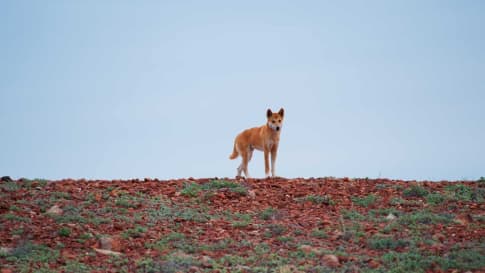
days
Apr, May, Jul, Aug, Oct +2Small group tour of Australia's Flinders ranges
Visiting South Australia
Escorted small group tour of the Flinders range in South Australia from Adelaide. Learn about Coober Pedy, Wilpena pound and water system of Lake Eyre as we explore and learn also about the history of the people who explored the Flinders.
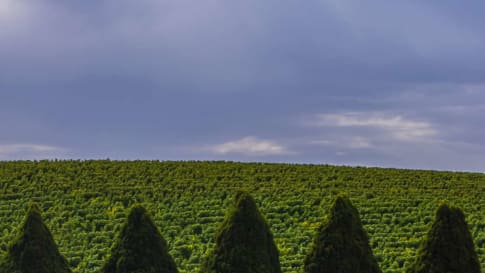
days
May, Aug, Sep, Oct, Nov +3Small group holidays to Adelaide and surrounds
Visiting South Australia
Explore and learn about on a small group tour of Adelaide city and its pastoral, cultural and historic settlement. Visit Fleurieu Peninsula, the Barossa valley, learn about William Morris and the arts and craft movement in the Art gallery and National trust houses.
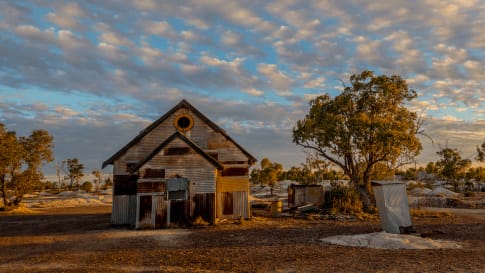
days
Mar, Apr, May, Jul, Aug +2Small group tour of outback Queensland
Visiting New South Wales, Queensland
To Dubbo and back, this small group tour takes you to learn about the Brewarrina fish traps, we travel high up into North Queensland to see the Dinosaurs of Winton and incredible Aboriginal rock art at Cathedral gorge and learn about opal mining and the history of Lightning ridge.
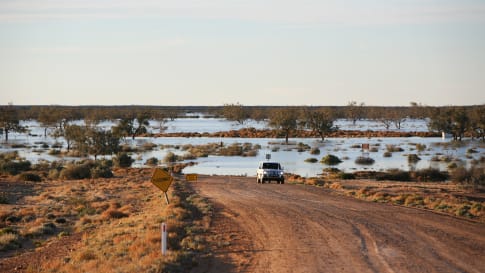
65 days
MarLong tour of Australia for a small group
Visiting New South Wales, Northern Territory
Small group tour for senior couples and solo travellers touring Australia. Travelling through the outback and visiting many of the famous sights as well as off the beaten track locations. Learn about the history of the people who explored the deserts, from indigenous communities to Europeans, as well as Burke and Wills, visit White Cliffs, Marree and far north Kakadu and the Kimberley.
From A$48,995 AUD
View TourArticles

Aboriginal culture of the Flinders Ranges, South Australia
The iconic Flinders Ranges of South Australia have a rich Aboriginal heritage and are home to a number of vitally important cultural sites and ancient artworks that this small group tour for mature and senior travellers has the opportunity its to learn about.

Ancient Aboriginal trade routes of Australia
Ancient Aboriginal trade routes of Australia Trade was a central part of life for Aboriginal people prior to the British settlement of Australia. Trading routes criss-crossed the nation, dispersing goods, information, technologies and culture thousands…
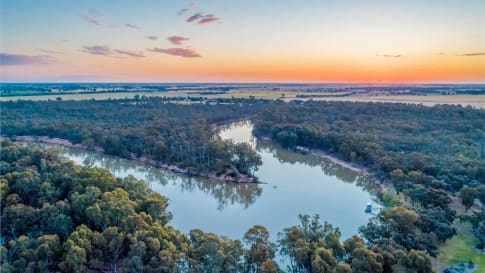
Appreciating Australian River Systems.
Appreciating the linking of the river network into the Australian, history, culture and landscape on a small group tour for mature and senior travellers of couples or solo travellers is an integral part of understanding the continent of Australia and Aboriginal settlement.

Charles Sturt and the search for the inland sea
Sturt is an iconic British explorer.From this article escorted small group tours for mature and senior travellers may join as couples or solo travellers programs that explore and share Aboriginal history, the landscapes and culture of the Australian outback with Stuart and Eyre, Burke and Wills and more.

Coober Pedy, South Australia
The town of Coober Pedy was established in 1915, when a 14-year old boy found a precious opal in a remote part of the South Australian outback. On this small group tour of the Flinders ranges we explore and learn about this and other towns in the Flinders and its importance to the Aboriginal community.

Landscape of Southern Australia from Mallee and Mulga.
Escorted small group tours for mature and senior travellers in Western Australia, Victoria, South Australia & NSW drive through former Mallee country. Article explains the iconic beginnings of Mallee and Mulga in the arid landscapes.
Questions about Australia for senior travellers
Questions About Australia for senior travellers Odyssey Traveller specialises in crafting unforgettable experiences for senior and mature-aged travellers interested in learning as a couple or as a solo traveller when they travel. Providing adventure and…

Short history of Adelaide, Australia
The capital of South Australia, Adelaide has a fascinating and distinctive history as the only Australian state without a convict past. On both of these small group tours; Adelaide or the Flinders ranges we explore and learn about this city.

The Australian Outback: A Definitive Guide
Explore learn and consider what is the outback in this article. For mature and senior travelers considering joining a small group package tours into the outback to see, learn and explore about this unique place, not only the landscape but the Aboriginal approach to living. On each of the tours for couples and the single traveler you learn something different but fascinating, from Outback Queensland, the Flinders, Broken Hill and the Kimberley and the wildflowers all contribute to this question, what is the outback?

The Burke and Wills Expedition, 1860-61
Learn on a small group tour of central Australia for active mature or senior travellers from Broken hill about Burke and Wills ambitious expedition. Suitable for mature aged couples or solo travellers.

The expedition of Edward John Eyre, 1841
For mature and senior travellers on a small group tour into outback Australia, John Eyre is an explorer who extended the colonial knowledge of outback Australia. Escorted small group tours for couple and solo travellers extend your learning on Aboriginal outback history and the colonials.

The Murray River, Australia
The Murray river, a powerhouse in so much of the Eastern side of Australia river system. Learn about its contribution to Aboriginal and colonial history. Study and appreciate more on a escorted small group tour into the Australian outback with mature and senior travellers couples or solo travellers each year.

The Simpson Desert, Australia
The Simpson Desert, Australia Sand dunes, desert flora, and splendid isolation: the Simpson Desert is one of the great wildernesses of outback Australia. Crossing the borders of South Australia, Queensland and the Northern Territory, the…

Understanding the Channel Country, Australia
Unique geography and a fascinating history as a pre-historic sea, and subsequently precious land to Aboriginal people and European pastoralists is explored on a small group tour for mature and senior travellers into the Outback.




